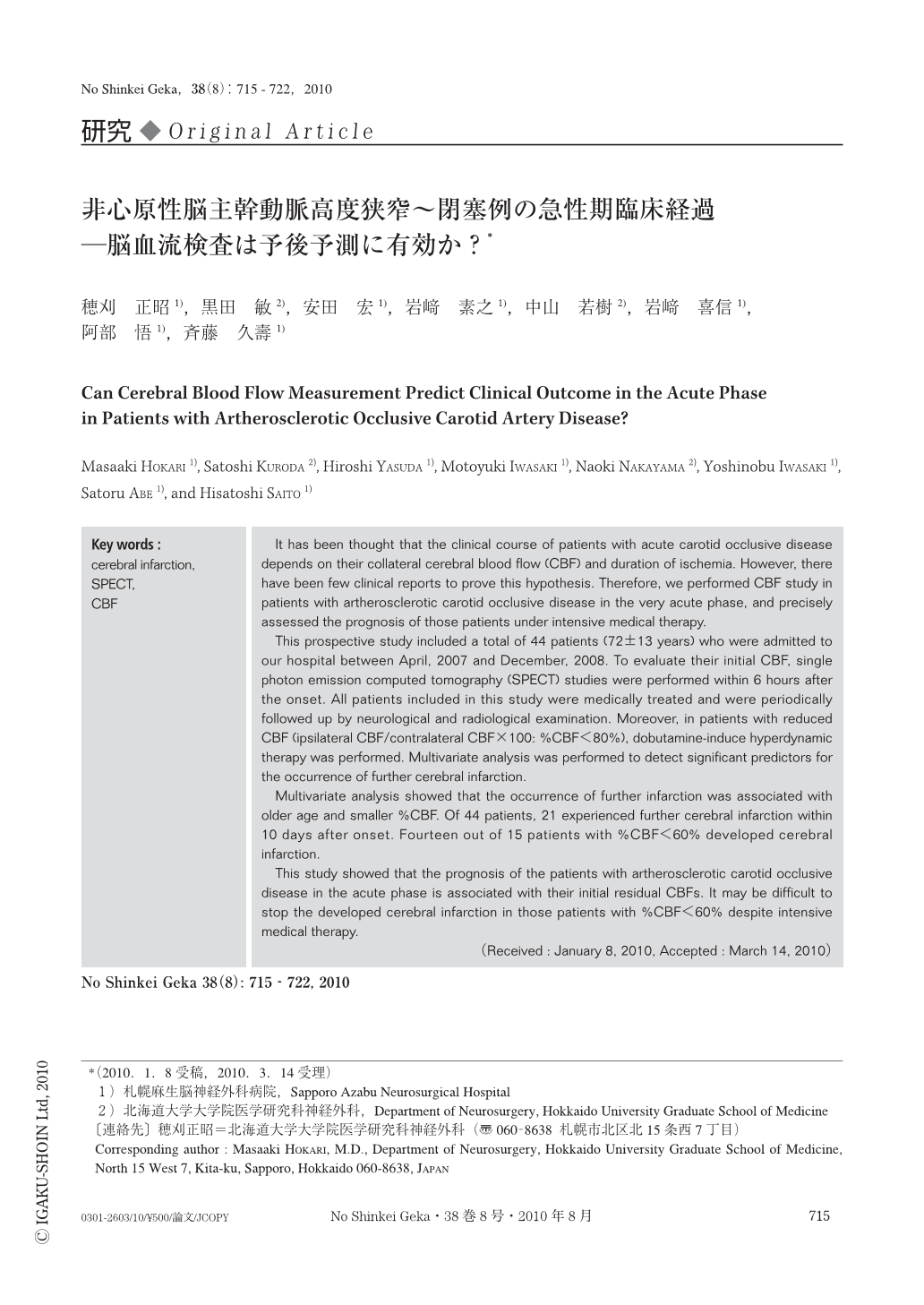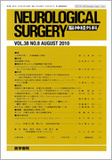Japanese
English
- 有料閲覧
- Abstract 文献概要
- 1ページ目 Look Inside
- 参考文献 Reference
Ⅰ.は じ め に
脳虚血領域の可逆性の閾値は,残存血流量と虚血持続時間に依存すると言われる9,11).一般に,心原性塞栓症では側副路の発達は悪く,血流は高度に低下するため,脳虚血領域の可逆性の閾値は虚血持続時間の影響が大きい.一方で,非心原性の閉塞性頚動脈疾患においては,側副路の発達程度により残存血流の程度はさまざまであり4,8),脳虚血領域の可逆性の閾値は残存血流量の影響が大きくなる.また,非心原性の閉塞性頚動脈疾患の症例の一部では,数時間から数日の経過で進行性に症状が悪化したり,症状の増悪と寛解を繰り返したりすることも,臨床の場ではしばしば経験する.これらの症例に対する残存血流量の初期評価は,急性期~亜急性期の治療方針や予後などにとって非常に重要と考えられるが1,2,14),急性期の脳血流評価に基づいた,臨床経過の詳細な報告はいまだに少ないのが現状である.
今回,われわれは非心原性閉塞性頚動脈疾患の超急性期に脳血流量を評価し,積極的な内科的治療下における,脳梗塞の拡大の有無や神経症状の変化などとの関連を検討したので報告する.
It has been thought that the clinical course of patients with acute carotid occlusive disease depends on their collateral cerebral blood flow (CBF) and duration of ischemia. However, there have been few clinical reports to prove this hypothesis. Therefore, we performed CBF study in patients with artherosclerotic carotid occlusive disease in the very acute phase, and precisely assessed the prognosis of those patients under intensive medical therapy.
This prospective study included a total of 44 patients (72±13 years) who were admitted to our hospital between April, 2007 and December, 2008. To evaluate their initial CBF, single photon emission computed tomography (SPECT) studies were performed within 6 hours after the onset. All patients included in this study were medically treated and were periodically followed up by neurological and radiological examination. Moreover, in patients with reduced CBF (ipsilateral CBF/contralateral CBF×100: %CBF<80%), dobutamine-induce hyperdynamic therapy was performed. Multivariate analysis was performed to detect significant predictors for the occurrence of further cerebral infarction.
Multivariate analysis showed that the occurrence of further infarction was associated with older age and smaller %CBF. Of 44 patients, 21 experienced further cerebral infarction within 10 days after onset. Fourteen out of 15 patients with %CBF<60% developed cerebral infarction.
This study showed that the prognosis of the patients with artherosclerotic carotid occlusive disease in the acute phase is associated with their initial residual CBFs. It may be difficult to stop the developed cerebral infarction in those patients with %CBF<60% despite intensive medical therapy.

Copyright © 2010, Igaku-Shoin Ltd. All rights reserved.


